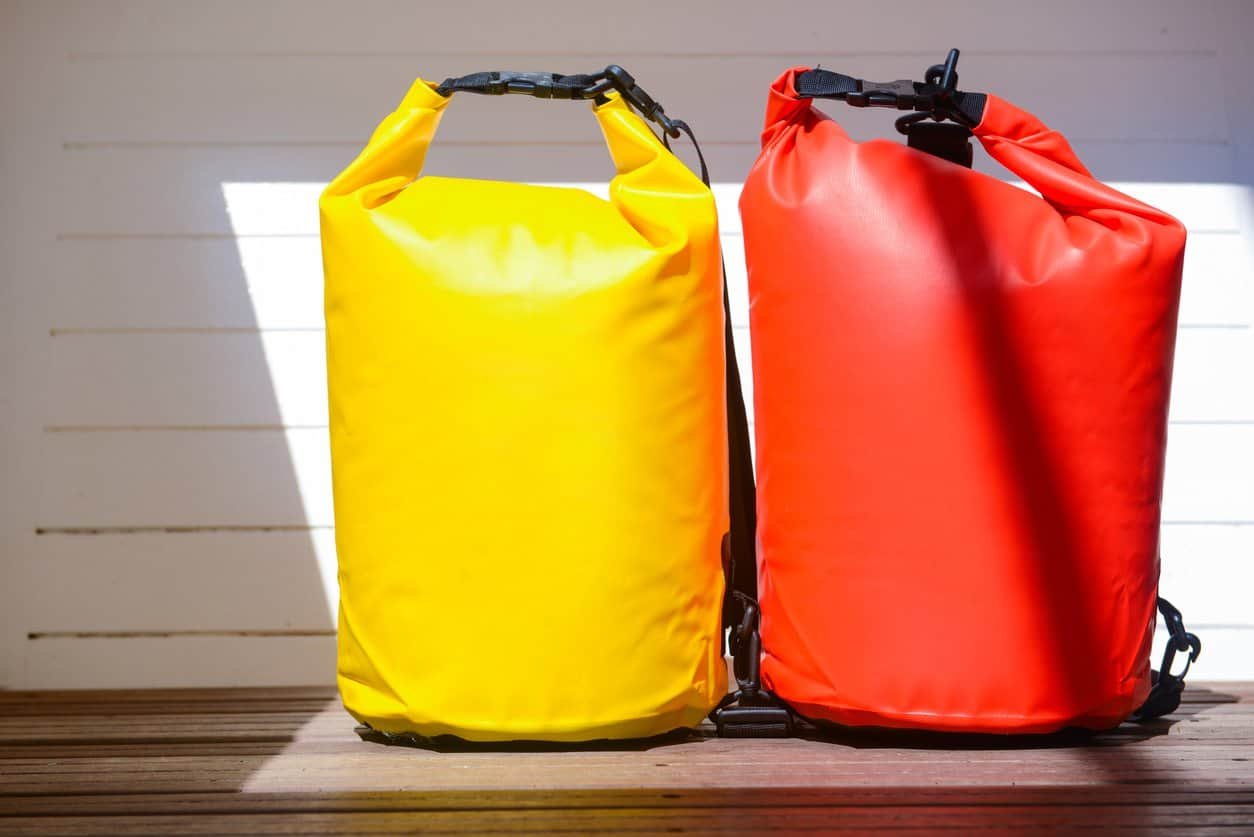Diving into the heart of outdoor adventures often involves crossing paths with water in its many forms, from serene lakes and rushing rivers to unexpected downpours. In these moments, a dry bag becomes more than just an accessory; it transforms into a guardian of our most essential items, shielding them from the elements. However, the very nature of these adventures means our dry bags frequently encounter dirt, sand, and residual moisture, leading to the inevitable question: How do you keep the inside of a dry bag pristine and odor-free? Cleaning the interior of a dry bag is crucial not only for the longevity of the bag itself but also for the protection it offers. This guide delves into effective, safe methods to cleanse your dry bag, ensuring it continues to serve as a reliable barrier against the wet and wild unpredictability of the great outdoors. Whether your dry bag accompanies you on kayaking excursions, camping trips, or as a staple in your adventure gear, understanding how to maintain its cleanliness is essential for every explorer.
Quick Insight
At the core of maintaining any piece of outdoor equipment is the balance between preserving its functionality and ensuring it’s ready for your next adventure. When it comes to dry bags, the task at hand isn’t merely about removing visible dirt or debris; it’s about safeguarding the integrity of the bag’s interior environment. This is where the importance of properly cleaning the inside of a dry bag comes into sharp focus. While these indispensable tools are designed to keep water out, they can also trap moisture and particulates inside, creating conditions ripe for mold, mildew, and odors. The challenge, then, becomes not only cleaning the dry bag in a way that removes these unwanted guests but doing so without compromising the material’s waterproofing or structural integrity. Achieving this requires a nuanced approach, one that respects the material makeup of the bag and the adventures it has endured. This quick insight into cleaning the inside of your dry bag is about more than just upkeep; it’s a fundamental part of ensuring your gear is as prepared as you are for whatever lies ahead.

Understanding Your Dry Bag
Diving deeper into the nuances of your dry bag involves more than recognizing it as a waterproof container; it’s about understanding the materials, construction, and specific care requirements that ensure its longevity and effectiveness. Each dry bag is a composite of thoughtful design and material engineering aimed at protecting your gear under varying conditions. Here’s a closer look at what makes your dry bag tick and how that influences its care and maintenance.
Material Composition
Dry bags are predominantly made from one of several key materials, each chosen for its waterproof and durability properties:
- PVC (Polyvinyl Chloride): Known for its ruggedness, PVC dry bags are often heavier and suited for rough conditions. Their maintenance requires avoiding harsh chemicals that can degrade PVC over time.
- Nylon with TPU (Thermoplastic Polyurethane) Coating: This combination offers a lighter alternative to PVC, providing flexibility and resistance to abrasion. Cleaning should focus on preserving the integrity of the TPU coating, which is crucial for its waterproof function.
- Vinyl: Vinyl dry bags are typically transparent, allowing you to see the contents without opening the bag. While durable, vinyl can be susceptible to scratches and cracks if not cleaned and stored properly.
Construction Details
The way a dry bag is constructed plays a significant role in how you should approach cleaning its interior:
- Seam Sealing: Most dry bags feature welded or taped seams to prevent water ingress. When cleaning, it’s important to avoid actions that could stress these seams, as breaches here compromise the bag’s waterproofing.
- Closure Systems: Roll-top closures, common in many dry bags, rely on the material and construction integrity for a watertight seal. Cleaning around these areas requires care to prevent any residue buildup that could impair the seal.
Specific Care Requirements
Understanding the material and construction of your dry bag not only aids in effectively cleaning it but also in maintaining its functionality over time:
- Avoiding Heat Exposure: Materials like PVC and TPU can warp or melt if exposed to high temperatures during cleaning or drying, so it’s crucial to use lukewarm water and air dry away from direct heat.
- Chemical Exposure: Harsh detergents and solvents can break down waterproof coatings and materials, so opt for mild soaps and avoid bleach or alcohol-based cleaners.
Recognizing Signs of Wear
Regular inspection of your dry bag for signs of wear, particularly along seams, closures, and areas of frequent flexion, can guide targeted cleaning and maintenance efforts. Addressing these early prevents minor issues from escalating into leaks or failures.
Step-by-Step Cleaning Guide
To ensure the inside of your dry bag remains clean, fresh, and ready for your next adventure, a detailed, step-by-step cleaning guide is crucial. Proper cleaning not only removes dirt and prevents odors but also maintains the bag’s integrity for future use. Here’s an in-depth look at how to thoroughly and safely clean the inside of your dry bag:
Preparation
- Choose the Right Cleaning Agents: Opt for a mild, eco-friendly soap that effectively cleans without harsh chemicals. These gentle soaps ensure the waterproof lining remains intact.
- Prepare the Cleaning Solution: Mix a small amount of mild soap with lukewarm water in a clean basin. The water should be enough to cover the bottom of the dry bag but not so much as to unnecessarily soak it.
Cleaning Process
- Empty the Bag: Make sure the dry bag is completely empty. Shake out any loose dirt or debris from the inside.
- Pre-treat Stains: If there are noticeable stains, apply a small amount of the cleaning solution directly to the area and gently rub with a soft cloth or sponge. Allow it to sit for a few minutes before the full cleaning.
- Wipe the Interior: Dip a soft cloth or sponge into the cleaning solution, wring out excess water, and gently wipe the inside of the dry bag. Pay special attention to seams, corners, and any areas with visible dirt or stains.
- Use a Soft Brush for Tough Grime: For areas with stubborn grime, use a soft-bristled brush to gently scrub the surface. Be careful not to damage the material.
- Rinse Thoroughly: After scrubbing, rinse the interior with clean, lukewarm water. Make sure all soap residue is washed away, as leftover soap can attract dirt and degrade the material over time.
Drying and Aftercare
- Air Dry: Turn the dry bag inside out and hang it in a well-ventilated area away from direct sunlight. Ensure it’s completely dry before storing or using it again.
- Check for Complete Dryness: Inspect every fold and corner for any leftover moisture. Even a small amount can lead to mold or mildew growth.
Preventative Maintenance
- Regular Checks: Periodically inspect the inside of your dry bag for any signs of wear or damage. Early detection of issues can prevent them from becoming bigger problems.
- Avoid Harsh Conditions: While dry bags are designed to withstand harsh environments, minimizing exposure to extreme conditions when possible can prolong their life.
- Proper Storage: When not in use, store your dry bag in a dry, cool place. Keep it loosely folded or rolled to avoid creases or stress on the material.

Preventing Common Cleaning Mistakes
Ensuring the inside of your dry bag is thoroughly and safely cleaned is essential, but it’s equally important to be aware of and prevent common cleaning mistakes that could compromise the bag’s integrity or its waterproof capabilities. Here’s an expanded guide on avoiding these pitfalls to keep your dry bag in optimal condition:
Avoiding Excessive Water Exposure
Mistake: Over-soaking the dry bag in water during cleaning.
Prevention: Limit direct water exposure by using a damp cloth or sponge for cleaning instead of fully submerging the bag. This helps protect the waterproof seal and material integrity.
Using Harsh Chemicals
Mistake: Applying strong detergents or bleach, thinking it will better sanitize the bag.
Prevention: Stick to mild, eco-friendly soaps that effectively clean without damaging the bag’s fabric or affecting its waterproof coating.
Aggressive Scrubbing
Mistake: Scrubbing the bag too harshly in an attempt to remove tough stains or dirt.
Prevention: Use gentle motions with a soft-bristled brush or cloth. For persistent stains, allow the cleaning solution to soak on the spot for a few minutes before lightly scrubbing.
Improper Drying Techniques
Mistake: Using direct heat sources like hairdryers, radiators, or placing the bag in direct sunlight to speed up the drying process.
Prevention: Air dry the bag inside out in a shaded, well-ventilated area. Direct heat can damage the material and degrade waterproofing over time.
Neglecting Post-Cleaning Care
Mistake: Storing the dry bag while it’s still damp or not checking thoroughly for residual moisture.
Prevention: Ensure the bag is completely dry, inside and out, before storage. Moist areas can become breeding grounds for mold and mildew.
Overlooking Manufacturer’s Instructions
Mistake: Ignoring the cleaning and care guidelines provided by the manufacturer.
Prevention: Always refer to and follow the manufacturer’s instructions for cleaning and maintenance. These guidelines are tailored to the specific materials and construction of the bag to ensure its longevity.
Forgetting Regular Maintenance Checks
Mistake: Only focusing on the interior and neglecting the overall condition of the dry bag.
Prevention: Regularly inspect the entire bag, including seams, closures, and the exterior, for any signs of wear or damage that could impact its performance.
Addressing Tough Stains and Grime
Effectively addressing tough stains and grime inside your dry bag requires a balanced approach that ensures thorough cleaning without compromising the bag’s material or waterproof integrity. Here are detailed strategies for tackling these stubborn issues while preserving the quality of your dry bag:
Spot Cleaning for Targeted Areas
Identify and Isolate: Before beginning the overall cleaning process, identify areas with significant staining or built-up grime. Isolating these spots allows for targeted cleaning that can be more aggressive than what you’d apply to the entire bag.
Spot Cleaning Solution: Create a slightly stronger solution of mild soap and lukewarm water. Apply this solution directly to the stained areas using a soft cloth. For eco-friendly alternatives, consider using a mixture of water and white vinegar, which can break down grime without harsh chemicals.
Gentle Scrubbing Techniques
Soft-Bristled Brushes: Use a soft-bristled brush to gently work the cleaning solution into the stains. The key is to use light circular motions that help lift the grime without damaging the fabric.
Microfiber Cloths: For less abrasive cleaning, microfiber cloths can be effective. Their fine fibers are gentle on waterproof coatings but can still help loosen and lift stubborn stains.
Natural Stain Removers
Baking Soda: For organic stains or odors, baking soda can be a powerful ally. Make a paste with water and apply it to the stain. Let it sit for a few hours before gently scrubbing and rinsing. Baking soda absorbs odors and gently breaks down organic material.
Lemon Juice: Lemon juice’s natural acidity makes it effective against mildew and mold stains. Apply directly to the stain, allow it to sit for a few minutes, and then rinse thoroughly. Always perform a spot test on an inconspicuous area first to ensure the lemon juice doesn’t affect the bag’s color.
Dealing with Persistent Grime
Soaking: For areas with deeply ingrained grime, allowing the spot cleaning solution to soak for 10-15 minutes can help loosen the material, making it easier to remove with gentle scrubbing.
Rinsing and Drying
Thorough Rinsing: After addressing tough stains, rinse the area well with clean water to remove any soap residue. Soap left on the fabric can attract more dirt and may degrade waterproof coatings over time.
Complete Drying: Ensure the treated area is completely dry before storing or using the dry bag again. As with the general cleaning process, air dry the bag in a well-ventilated, shaded area to avoid direct heat or sunlight.
Ensuring Complete Dryness
Ensuring complete dryness of your dry bag after cleaning is not just about aesthetics or preventing unpleasant odors; it’s a crucial step in maintaining the material’s integrity and preventing the growth of mold and mildew, which can degrade the waterproofing capabilities over time. Here’s a comprehensive approach to guaranteeing your dry bag is thoroughly dried and preserved for your next adventure:
Air Drying Inside Out
Maximize Exposure to Air: After cleaning, turn the dry bag inside out to expose the interior. This method ensures that all nooks, crannies, and seams are accessible to air, promoting faster drying.
Hang in a Well-Ventilated Area: Choose a spot with good airflow away from direct sunlight. An outdoor space like a covered porch or a room with a dehumidifier can expedite the drying process. Direct sunlight can degrade some materials over time, so it’s essential to find a balance between sun exposure for natural disinfection and protection of the bag’s material.
Using Absorbent Towels
Blot Excess Moisture: Before air drying, gently blot the interior of the dry bag with a clean, absorbent towel. This step removes excess water, significantly reducing drying time. Be gentle to avoid stressing the material, especially along seams.
Stuffing with Towels: For larger dry bags, loosely stuffing them with dry, absorbent towels can help wick moisture away from the interior surfaces. Replace the towels with dry ones periodically until the interior is only damp, then allow air drying to complete the process.
Ensuring Even Drying
Rotate and Reposition: Periodically check on the dry bag as it dries, turning and opening it differently to ensure that air reaches all parts. This rotation prevents moisture from settling in any area for too long, which could promote mold growth.
Checking for Residual Moisture
Visual and Tactile Inspection: After the bag has had significant time to dry, inspect it visually and by touch for any signs of dampness, paying close attention to seams, folds, and corners where moisture might hide.
The Final Test: If possible, leave the dry bag in a dry, indoor space overnight after it feels dry to the touch. This extra time can reveal residual moisture that wasn’t apparent, ensuring the bag is thoroughly dry before storage or use.
Addressing Humidity and Climate Considerations
Dehumidifiers and Fans: In humid climates, using a dehumidifier in the room where the bag is drying can significantly help. A gentle fan can also circulate air around the bag, speeding up the drying process without applying direct heat.
Storage After Drying
Proper Storage: Once completely dry, loosely roll or fold your dry bag for storage in a cool, dry place. Avoid tightly folding or compressing the bag, which can create creases that may compromise the waterproof material over time.

FAQ
Q1: How often should I clean the inside of my dry bag?
A: Clean the interior of your dry bag as needed, based on usage. After exposure to dirty or salty water, or if you notice odors or visible grime, it’s time for a cleaning. Regular light cleanings can prevent the buildup of harder-to-clean stains and odors.
Q2: Can I use a hairdryer to speed up the drying process?
A: It’s not recommended to use a hairdryer, especially on hot settings, as the heat can damage the waterproof coatings or materials of the dry bag. Air drying in a well-ventilated area is the safest method.
Q3: Is it safe to store electronic devices in a dry bag that’s been freshly cleaned and dried?
A: Yes, once the dry bag is completely dry, it’s safe to store electronics and other sensitive items in it. Ensure no residual moisture is present to avoid damage to your devices.
Q4: Can I leave my dry bag to dry outdoors overnight?
A: While air drying outdoors is effective, be cautious of leaving it out overnight due to potential dew or unexpected rain which can re-wet the bag. Also, prolonged exposure to outdoor elements can degrade some materials over time.
Q5: What should I do if I still smell mildew after cleaning and drying my dry bag?
A: If odors persist, a second cleaning with a solution that includes baking soda or a mild vinegar solution can help neutralize smells. Ensure the bag is thoroughly rinsed and dried afterward.
Conclusion
Maintaining the inside of your dry bag through proper cleaning and drying is essential for preserving its condition and ensuring it continues to provide reliable protection for your belongings. Understanding the material of your dry bag, employing gentle cleaning techniques, and ensuring complete dryness are key steps in this process. By following the detailed steps outlined and adhering to best practices for care, you can extend the life of your dry bag and keep it ready for all your adventures. Regular maintenance not only protects your gear but also contributes to your overall experience in the great outdoors. With a clean, dry, and well-maintained dry bag, you’re equipped to face the elements confidently, knowing your essentials are safeguarded. Remember, the time and effort invested in caring for your outdoor gear pay off in longevity and performance, ensuring you’re always prepared for whatever adventures lie ahead.

